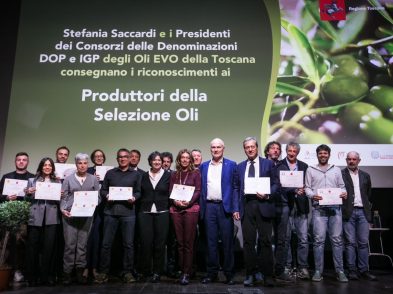For those who don’t take an interest in hunting, it is
easy to forget that the transition from autumn to winter also marks the hunting
season and the delicious promise of la caccia. Although not always
readily available in supermarkets, most good Florentine butchers stock a
variety of fresh local game from October to December.
There
are several ways to prepare wild game, but the dish that usually comes to mind
before many others is perhaps the world-famous French classic canard à l’orange (duck with orange). But just how traditionally French is this dish? It most
likely has origins in Florence. Originally known as papero alla melarancia,
it was invented in the Middle Ages, when it became popular in noble kitchens to
use citrus fruits as a way to preserve meat. It was in this era that the
powerful Medici family subsequently ordered the construction of limonaie (orangeries) in many of their villas, where they mainly cultivated lemons and
oranges in large terracotta pots. Even today, these limonaie are
important features of most Medici villas.
Papero alla melarancia was exported to France in 1529, when the 14-year-old Caterina de’
Medici, daughter of Lorenzo II de’ Medici, ruler of Florence, married the
future king of France, Henry II. Forty chefs from Siena and Florence
accompanied her to Paris, bringing some of their best recipes, many of which
were later claimed by the French. Among these are crespelle (crepes; see
TF 146), balsamella (béchamel sauce), carabaccia (onion soup; see
TF 141) and, of course, papero alla melarancia, soon renamed canard à
l’orange.
Along with her cooks and their
recipes, Caterina de’ Medici is also reported to have imported to France the
fork (see TF 161), porcelain dishes, Venetian glassware, the Italian banking
system, theatrical comedy and ballet, as well as the expectation that ladies
would be present at dinner (previously they had been excluded, except for
special occasions).
While Italians fiercely defend the
theory that canard à l’orange originated in Florence, other nations,
including France, have also claimed to be the source. In The Oxford
Companion to Italian Food, Gillian Riley says that French recipes for duck
with orange sauce existed as far back as the fourteenth century. However, the
majority of food historians credit Caterina de’ Medici, a veritable culinary
trendsetter who brought more to France than any other noble, for this dish.
Whether fact or fiction, the
possibility of the Florentine origin of duck à l’orange will add a touch
of historical spice to this perfect winter warmer. Succulent, rich duck meat
combined with the warming, aromatic spice of orange truly makes a delicious
alternative to the everyday roast. With high levels of protein, B vitamins and
minerals such as zinc, potassium, magnesium and iron, duck meat is very
nutritious.
Some cooks avoid duck à
l’orange, deterred by its reputation as a complex dish. Here, however, I
offer a no-fuss but equally delicious version, arrosto di anatra all’arancia,
in tribute to its simple Florentine origins.
Arrosto di anatra all’arancia
(serves 4 as a piatto unico or 6
as a secondo)
Ingredients
1 duck (1.5-2 kilos)
4 oranges
zest of 1 orange
1 onion
1 stalk celery
1 carrot
200 ml chicken stock
juice of 2 oranges
100ml brandy
1-2 tsp brown sugar
Salt and pepper to
taste
Preparation
If you have not
bought the duck already cleaned, clean it well, cutting off any excess fat and
removing the giblets. Preheat the oven to 220 degrees Celsius. Cut one of the
oranges and the onion into quarters and stuff them inside the cavity. Dice the
carrot and celery and place in the bottom of a roasting pan. Cut the other
orange into slices and add to the bed of carrot and celery. Place the duck on
top so that it covers all of the vegetables and orange slices. Prick the duck
all over with a skewer and season generously with salt and pepper.
Place it in the
preheated oven. After 20 minutes, reduce the temperature to 180 degrees Celsius
and continue to roast the duck for another hour and 10 minutes, occasionally
basting the meat with its juices. Remove from the oven, cover and leave to rest
on a large board while you make the sauce.
Strain excess fat
from the roasting pan and remove the orange slices, carrots and celery with a
slotted spoon. Adding a splash of chicken stock, place the roasting pan over
medium heat, scraping off any residue from the sides and base of the pan. Add
the remaining stock, the zest of 1 orange and the juice of both of the
remaining 2 oranges, and 1-2 teaspoons of brown sugar (according to taste).
Simmer gently for 10-15 minutes, until the sauce has reduced a little. Add the
brandy, taste and season as required.
To serve, decorate
the duck with singed orange slices, and carve into quarters at the table,
adding the orange sauce. Serve along with roasted potatoes and seasonal
vegetables.




